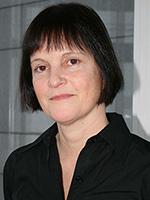ZEN QAI II
Quality Assurance and Integration of Zooplankton Monitoring in the Baltic Sea (2011-2013)
HELCOM ZEN QAI project was planned to terminate in December 2013, but due to delays in starting the project as well as the longer than expected time needed to analyse the results of the Ring test, the project has been extended until December 2014.
Background
Zooplankton is a major link in aquatic ecosystems and integral to food web dynamics, ecosystem productivity, nutrient and carbon cycling. With the position that zooplankton has in the food web – sandwiched between phytoplankton and fish (between eutrophication and overfishing) – data and understanding of zooplankton are a prerequisite for an ecosystem approach to management. This approach is a cornerstone to HELCOM, Baltic Sea Action Plan, Marine Strategy Framework Directive and EU Common Fisheries Policy.
Aim
The overarching aim of the project is to ensure and maintain high quality standard of the international Baltic regional zooplankton monitoring within the HELCOM COMBINE Programme and to assure data comparability and their effective usage. This will be achieved by:
- Organizing training courses/workshops;
- Revising and updating the COMBINE manual;
- Maintaining intercalibrations;
- Updating taxonomic lists;
- Evaluating applicability of zooplankton-based indices as environmental indicators; and
- Revising recommendations for zooplankton biomass assessment.
Activities and objectives
| Activities | Objectives |
| I. Training courses | a) To maintain continuity and high quality in zooplankton identification and enumeration; b) To follow recent changes in taxonomy of problematic zooplankton species; c) Maintaining and upgrading of the expertise for identification of alien species. |
| II. Intercalibrations with regard to species identification, abundance and biomass estimations | a) To further unify sampling and counting methods between the laboratories; b) To harmonize general methodology by evaluating differences related to variations in counting procedure and equipment (influence of sub-sampling technique, chamber volume, counting strategy etc.), preservation, etc.; c) To improve quality control in participating laboratories. |
| III. Revision and update of taxonomic lists | a) To add new species and developmental stages when necessary; b) To link invalid synonyms and valid species names in co-operation with ICES Data Centre |
| IV. Development of zooplankton indicators for environmental quality assessment | To assist in development of regional target values for good environmental status based on zooplankton-related variables. |
| V. Revision of the recommendations for mesozooplankton biomass assessment in the Baltic Sea | a) To revise and unify mesozooplankton biomass calculations between the laboratories; b) To update COMBINE zooplankton monitoring guidelines with respect to the general revision of HELCOM monitoring in 2013. |
| VI. Regular updating via e-mail as well as during the workshops/meetings | To share information on occurrence of new and rare species, unusual fluctuations in community composition and abundance observed regionally, recent changes in taxonomy of relevant zooplankton groups, new relevant publications, meetings and conferences. |
Expected results
- Annual reports to HELCOM MONAS;
- Intercalibration reports to HELCOM;
- Revised biomass assessment guidelines and taxonomic lists of Baltic zooplankton species
- Contribution to the CORESET report regarding use of zooplankton in environmental status assessment;
- Final report (2011-2013).
For more information, please contact:

Ms. Ulla Li Zweifel
Professional Secretary
(Gear WG, State and Conservation WG)
ullali.zweifel@helcom.fi
Tel: +358 46 850 9198
Skype: helcom64
